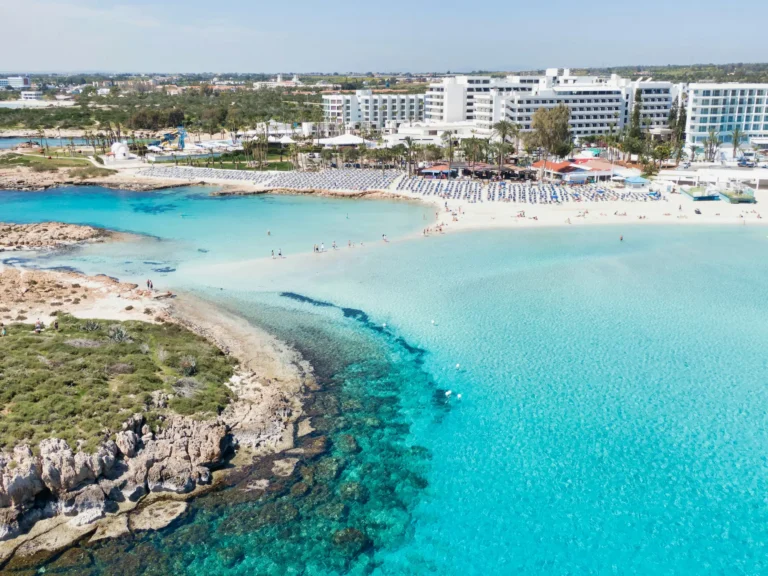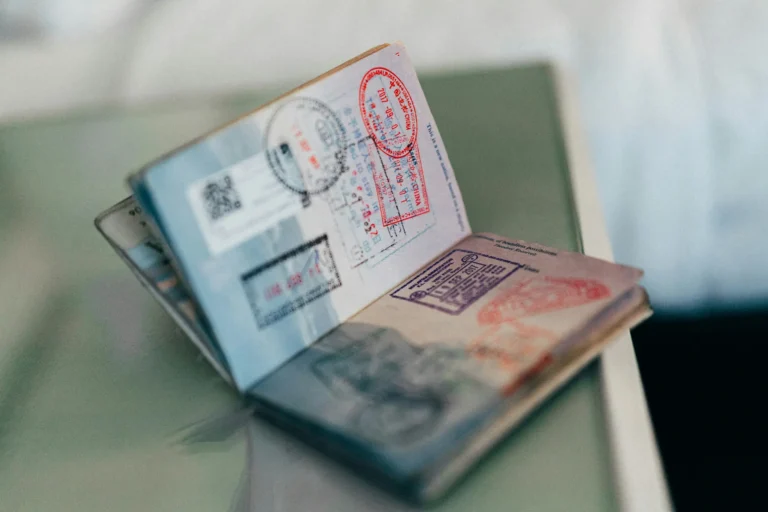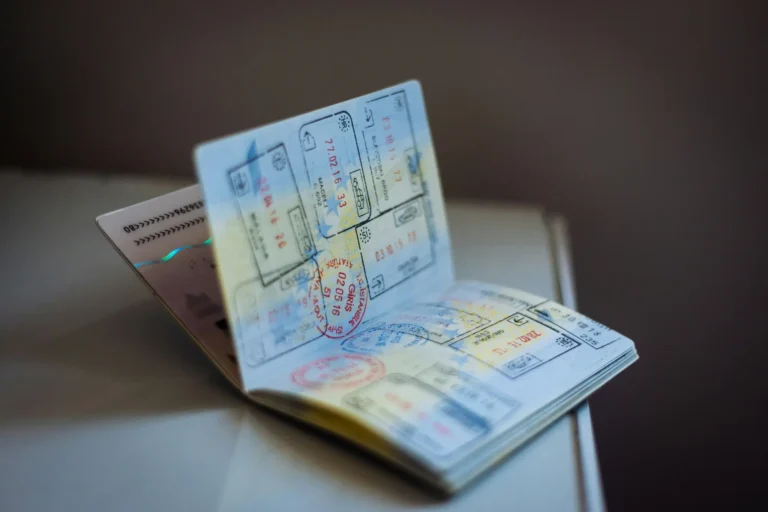
One of the first concepts that comes to mind when planning a trip to Europe is the “Schengen visa”. This type of visa allows free entry to more than 26 European countries and is the most requested visa for tourism, work, education, as well as family visits. There are some updates in the procedures, documents and application rules for those wishing to obtain a Schengen visa in 2025. In this blog, we will explain to you all the basic information about the Schengen visa - which countries it applies to, what documents are required, which centers you should apply to, and frequently asked questions.
What is a Schengen Visa?
A Schengen visa is an official travel permit that allows you to travel to the Schengen zone, which includes European countries. With this visa, it is possible to move from one country to another without border control. With this visa, you can enter the country that issued the visa and travel freely to other Schengen countries. The Schengen visa is mainly issued in two main categories: short-term (type C) and long-term (type D).
What is the Schengen zone and which countries does it cover?
The Schengen Agreement was signed on June 14, 1985 in the city of Schengen, near Luxembourg. The aim of the agreement is to eliminate border controls between European countries and ensure free movement. The agreement has been in effect since 1995. Currently, 27 countries are included in this zone. There is a right of free movement in this region.
Schengen Countries for 2025
| Country | EU Membership | Note |
|---|---|---|
| Germany | Member of the European Union | Schengen Member |
| Austria | Member of the European Union | Schengen Member |
| Belgium | Member of the European Union | Schengen Member |
| Czech Republic | Member of the European Union | Schengen Member |
| Denmark | Member of the European Union | Schengen Member |
| Estonia | Member of the European Union | Schengen Member |
| Finland | Member of the European Union | Schengen Member |
| France | Member of the European Union | Schengen Member |
| Greece | Member of the European Union | Schengen Member |
| Hungary | Member of the European Union | Schengen Member |
| Italy | Member of the European Union | Schengen Member |
| Latvia | Member of the European Union | Schengen Member |
| Lithuania | Member of the European Union | Schengen Member |
| Luxembourg | Member of the European Union | Schengen Member |
| Malta | Member of the European Union | Schengen Member |
| Netherlands | Member of the European Union | Schengen Member |
| Poland | Member of the European Union | Schengen Member |
| Portugal | Member of the European Union | Schengen Member |
| Slovakia | Member of the European Union | Schengen Member |
| Slovenia | Member of the European Union | Schengen Member |
| Spain | Member of the European Union | Schengen Member |
| Iceland | Not a Member of the European Union | Schengen Member |
| Liechtenstein | Not a Member of the European Union | Schengen Member |
| Norway | Not a Member of the European Union | Schengen Member |
| Switzerland | Not a Member of the European Union | Schengen Member |
| Bulgaria | Member of the European Union | Partial Schengen Membership from 2024 (air and sea borders) |
| Romania | Member of the European Union | Partial Schengen Membership from 2024 (air and sea borders) |
| Croatia | Member of the European Union | Full Schengen Membership from 2023 |
Types of Schengen visa
Short-term tourist visa (type C)
The most frequently applied type of visa. It is issued for travel, leisure, family visits or short business trips. It allows a stay of up to 90 days. The visa can be single or multiple.
Business visa
This visa should be obtained if you are attending an event, meeting or conference at the invitation of a company. An invitation letter and documents related to business activities are the main requirements.
Student visa (short-term)
Short-term courses and seminars are intended for participation. If you want to study for a long time, you should apply for a D-type student visa.
Transit visa
May be needed when changing flights at airports. If you do not leave the airport in a Schengen country, this visa is often not required. However, in some countries, such a visa is required for transit.
Long-term (D-type) visa and its differences
Issued for the purpose of education, family reunification, work permit or long-term residence. With a D-type visa, it is possible to live, work and register in that country. With this visa, only short trips to other Schengen countries can be made.
Documents required for a Schengen visa
- Passport: Must be valid for at least 3 months after the visa expires. It must have been issued in the last 10 years and have at least 2 blank pages.
- Visa Application Form: The official visa form must be filled out and signed.
- Photo: 3.5x4.5 cm size, taken within the last 6 months, with a light background, and in accordance with biometric rules.
- Travel Insurance: Medical insurance with a minimum coverage of 30,000 EUR within the Schengen zone must be provided.
- Flight and Hotel Reservations: Round-trip flight tickets and accommodation booking confirmation documents must be provided.
- Proof of Funds: Bank statement for the last 3 months, salary certificate, or sponsorship letter must be provided.
- Invitation Letter: If invited by someone, the letter must be in official form and supported by additional documents (ID, proof of residence).
- Additional Documents:
- Employment document (employment verification letter)
- Student ticket or university certificate
- Business document (Tax ID, tax report, etc.)
Common Reasons for Visa Rejection:
- Lack of additional information and documents.
- Invalid or insufficient travel insurance.
- Inaccurate presentation of the travel purpose.
- Insufficient funds in the bank account.
Which visa centers should I apply to for a Schengen visa?
Before using each center, it is important to review the visa fee, fees, appointment and reasons for refusal.
VFS Global
- Countries accepted: Austria, Bulgaria, Croatia, Czech Republic, Iceland, Italy, Latvia, Lithuania, Norway.
- Appointment process: It is carried out through the online system. It is important to make an appointment for a visa application. It is important to collect and submit documents correctly during the appointment.
- Payment: 35 euros.
- Additional services: Document translation, photo shooting and fast service.
- Response time: 7-15 business days. The response time may vary depending on the country you are applying to.
Visametric
- Countries served: Germany.
- Process: Electronic appointment → document collection → biometric data collection. After receiving an electronic appointment, documents must be submitted and biometric data collected.
- Payment 35 euros.
- Response time: 10-15 business days. In special cases, this period may be longer. A Schengen visa can be applied for no earlier than 180 days before the planned travel date.
Capago
- Countries served: France, Belgium, Luxembourg, Monaco, Netherlands, Portugal, Spain, Sweden.
- Steps: Online registration → submission of documents → biometric data.
- Additional services: Premium package, document translation, photo taking, fast service, destination changes.
- Fees: 35 euros.
- Response time: Continues for 7-15 business days. .
BLS
- Countries served: Hungary, Slovakia.
- Steps: Slovakia and Hungary need to schedule appointments on the BLS website and submit documents to visametric.
- Additional services: Premium package, document translation, photo taking, fast service, destination changes.
- Fees: 35 euros.
- Response time: The applicant can apply no earlier than 3 months and no later than 15 business days before the planned trip. Visa applications are processed within 7-15 business days. However, this period may be extended if the consul requires additional documents. The visa application processing time may take longer for citizens of some countries.
Greece Visa
- Application location: Greece Embassy
- Average response time: 7–14 days. If documents are submitted in full and steps are followed correctly, the response time may be shorter.
- Ödəniş: 35 euro
Switzerland Visa
- Countries served: Hungary, Slovakia.
- Steps: Slovakia and Hungary need to schedule appointments on the BLS website and submit documents to visametric.
- Additional services: Premium package, document translation, photo taking, fast service, destination changes.
- Fees: 35 euros.
- Response time: The applicant can apply no earlier than 3 months and no later than 15 business days before the planned trip. Visa applications are processed within 7-15 business days. However, this period may be extended if the consul requires additional documents. The visa application processing time may take longer for citizens of some countries.
Poland Visa
- Place of application: Embassy of Poland
- Average response time: 10-15 business days. The completeness and accuracy of the requested documents may shorten the response time.
- Payment: 35 euros
Romanian Visa
- Place of application: Romanian Embassy
- Average response time: 10-15 business days. The completeness and accuracy of the requested documents may shorten the response time.
- Payment: 35 euros
Schengen Visa Application Centers and Information
| Visa Center | Which countries accept visas? | Visa Fee | Address and opening hours |
|---|---|---|---|
| VFS Global | Austria, Bulgaria, Croatia, Czech Republic, Iceland, Italy, Latvia, Lithuania, Norway. | 35 euros | Address: Neftchilar avenue, Crescent business center 6th floor
Working hours: Monday–Friday, 09:00–16:00 |
| Visametric | Germany | 35 euros | Address: Baku, D. Aliyeva Street 106, Winter Park Plaza, 1st floor) Working hours: Monday–Friday, 09:00–16:00 |
| Capago | France, Belgium, Luxembourg, Monaco, Netherlands, Portugal, Spain, Sweden. | 35 euros | Address: Globus Center, 609, Jafar Jabbarli street, Baku, Azerbaijan Working hours: Monday-Friday, 09:00-17:00 |
| BLS | Hungary, Slovakia. | 35 euros | Address: Slovakia and Hungary Appointments must be scheduled on the BLS website and documents must be submitted to visametric. Working hours: Monday–Friday, 10:00-17:00 |
Visa Support
To place your order, click here, or you can contact us at 010/50/55-3000135 for more information.











